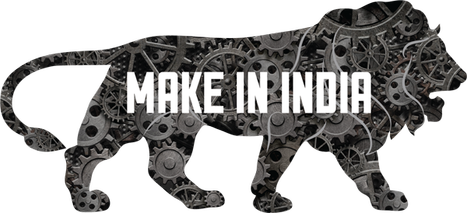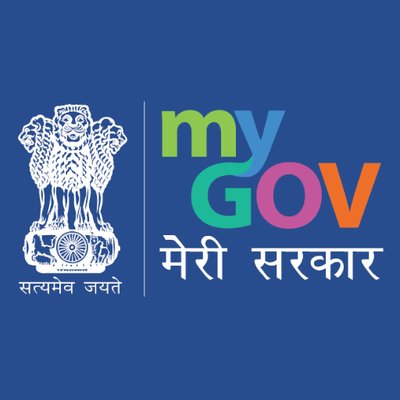FAQ
UJALA
1. What is UJALA scheme?
The initiative is part of Ministry of Power, Government of India’s efforts to promote efficient use of energy at the residential level; enhance the awareness of customers about the efficacy of using energy efficient appliances. It may be noted that the scheme was initially labelled DELP (Domestic Efficient Lighting Program) and was relaunched as UJALA (Unnat Jyoti by Affordable LED’s for All) programme. Under this scheme the customer is eligible to purchase any number of
- 3 Star and 5 Star LED bulbs at affordable cost
- 20W Energy Efficient LED Tube light at affordable cost
- BEE 3 start and 5 star rates Ceiling Fans(With and Without Remote) at affordable cost
- 10 Watt Inverter LEDs3 Star and 5 Star LED bulbs at affordable cost
BLDC Ceiling Fans
1. What is the air delivery and power consumption of BLDC fans available in the EESL Mart.?
Air delivery is minimum 220 CMM and power consumption is ≤ 30 watt at full speed.
2. What is the warranty on Fan?
The warranty on Fan is 3 years from the date of purchase.
3. Is installation of BLDC Ceiling fan covered?
Installation of BLDC ceiling fan is not provided by EESL
4. Do I need to bypass the regulator?
Yes, for BLDC fans with remote, wall regulator must be bypassed.
5. How Can I avail the warranty service on fan?
In case of any technical defect during the warranty period, consumer can call to the customer care number or mail to the email Id mentioned at “Contact us” or can raise ticket against the order placed by logging into his/her EESL Mart consumer login. Electrician will visit the customer premises for resolution of the complaint.
6. Can I install the fan myself, or do I need a professional?
While DIY installation is possible for many users, it is recommended to consult a professional electrician, especially if you are unfamiliar with electrical wiring and ceiling fan installation procedures.
7. My ceiling fan is not turning on. What should I do?
Check if the power supply is connected properly and ensure the remote control or wall switch is functional. Switch off the fan and switch on after 5 seconds If everything seems fine, there might be an issue with the fan's internal wiring or motor. Contact EESL customer support for further assistance.
8. My ceiling fan is making unusual noises. What could be the cause?
Noises can be due to loose screws, unbalanced blades, or internal motor issues. Tighten all visible screws, ensure the blades are properly aligned and balanced, and if the noise continues, contact customer support.
9. My fan's remote control is not working. What should I check?
Replace the batteries in the remote control and ensure there are no obstructions between the remote and the fan. If the issue persists, there may be a problem with the remote control or the fan's receiver unit. Contact customer support for further assistance.
10. My fan's speed seems inconsistent. What could be causing this?
Check the speed settings on the remote control. Check whether wall regulator is bypassed or not (For remote controlled BLDC fans). Ensure there are no obstructions affecting airflow or fan blade movement. If the issue persists, there may be a problem with the fan's control module. Contact customer support for further assistance.
11. What should I do if my fan's motor stops working suddenly?
Turn off the power supply to the fan immediately and contact customer support for assistance. Attempting to repair the motor yourself may void the warranty and pose safety risks.
12. Can I change the delivery address after placing the order.
No, you cannot change the delivery address once the order is placed.
LED Bulbs, Inverter LED Bulbs, LED Battens
1. What is the warranty on LED bulbs and LED battens?
Warranty on LED Bulbs, LED battens is one (1) year from the date of purchase against the technical defect.
2. How can I avail the warranty on LED Bulbs, battens
In case of any technical defect during the warranty period, consumer can call to the customer care number or mail to the email Id mentioned at “Contact us” or can raise ticket against the order placed by logging into his/her EESL Mart consumer login. After the defective bulbs/LED batten will be picked up from the consumer’s primses after the quality check and confirmation that complaint is genuine and working bulbs/LED batten will be shipped.
3. Whether bulbs/LED Battens can be used in outdoor applications
Bulb/LED Batten, inverter bulb is suitable for indoor use only. Exposure to rain drops, moisture, extremely high or low temperature may damage the bulbs/LED battens/inverter bulbs or cause malfunction.
4. If the switch for the inverter bulb is turned off and there's a power supply cut, will the inverter bulbs illuminate on battery backup?
No, if the switch for the inverter bulb is turned on bulb is glowing on main supply and there’s power supply cut then the bulb will continue to glow and switch to battery mode.
5. Do I need to periodically charge the inverter bulb
Inverter emergency bulb have built-in battery, make sure to keep it charged by powering ON the bulbs. Follow the recommended charging instructions provided in the user manual to maintain its battery life.
6. Can I change the delivery address after placing the order.
No, you cannot change the delivery address once the order is placed.
Super-Efficient Air Conditioner (SEAC)
1. What does the product contain?
The AC comes with Standard Installation Kit including:
- Three-meter copper piping (refrigerant and suction) with insulation
- Three meter insulated electric cable (3 core 2.5 Sq mm)
- Three-meter drainpipe (25mm dia Hard PVC/Mesh pipe
- Support brackets for cables and pipes as required.
For any additional material required for installation over and above the standard installation kit provided by the OEM, the customer has the choice to obtain the services at the rate specified below. Additional material shall be billed directly by the installation agency to the end customer for which payment shall be made by customer directly to the service provider upon installation.
| Item Description | Rate on F.O.R destination basis (Exclusive of GST) INR |
|---|---|
| Refrigerant Copper pipe (Rs. Per meter) inclusive of installation | 650 |
| Drainpipe (Rs. per meter) inclusive of installation | 120 |
| Outdoor Unit Stand (Rs. per stand) inclusive of installation | 750 |
| Power cable 3 core 2.5mm2 (Rs. Per meter) inclusive of installation | 120 |
| Dismantling of Window AC (Rs per AC) | 350 |
| Dismantling of Split AC (Rs per AC) | 750 |
2. What is the warranty policy for the components involved?
Comprehensive Warranty of 1 year for overall AC unit.
Additional Warranties
- For PCB - 1 + 4 year
- For Compressor 1+ 9 years.
- Refrigerant circuit - Covered under 1-year Comprehensive
Warranty including Gas Leakage.
3. How do I raise a complaint for service or maintenance?
During the period of comprehensive warranty, a customer can raise a complaint at EESL’s helpdesk.
4. Is there a provision for annual maintenance service?
Upon expiration of the comprehensive one-year warranty, customers have the option to obtain AMC services from the Original Equipment Manufacturer (OEM). Please note that AMC services are not included in the standard offerings provided by Energy Efficiency Services Limited (EESL).
- Negotiation Opportunity: Customers have the flexibility to negotiate the terms and costs of the AMC directly with the OEM to suit their needs.
- EESL's Role: EESL is not responsible for and shall not be liable for any AMC contracts executed between the customer and the supplier.
- In order to get an offer for AMC services for EESL's customers the following details can be advised by EESL to the customer:
- Wybor Customer Care No-8750035000
- Email: cc@wybor.in
-05.png)



